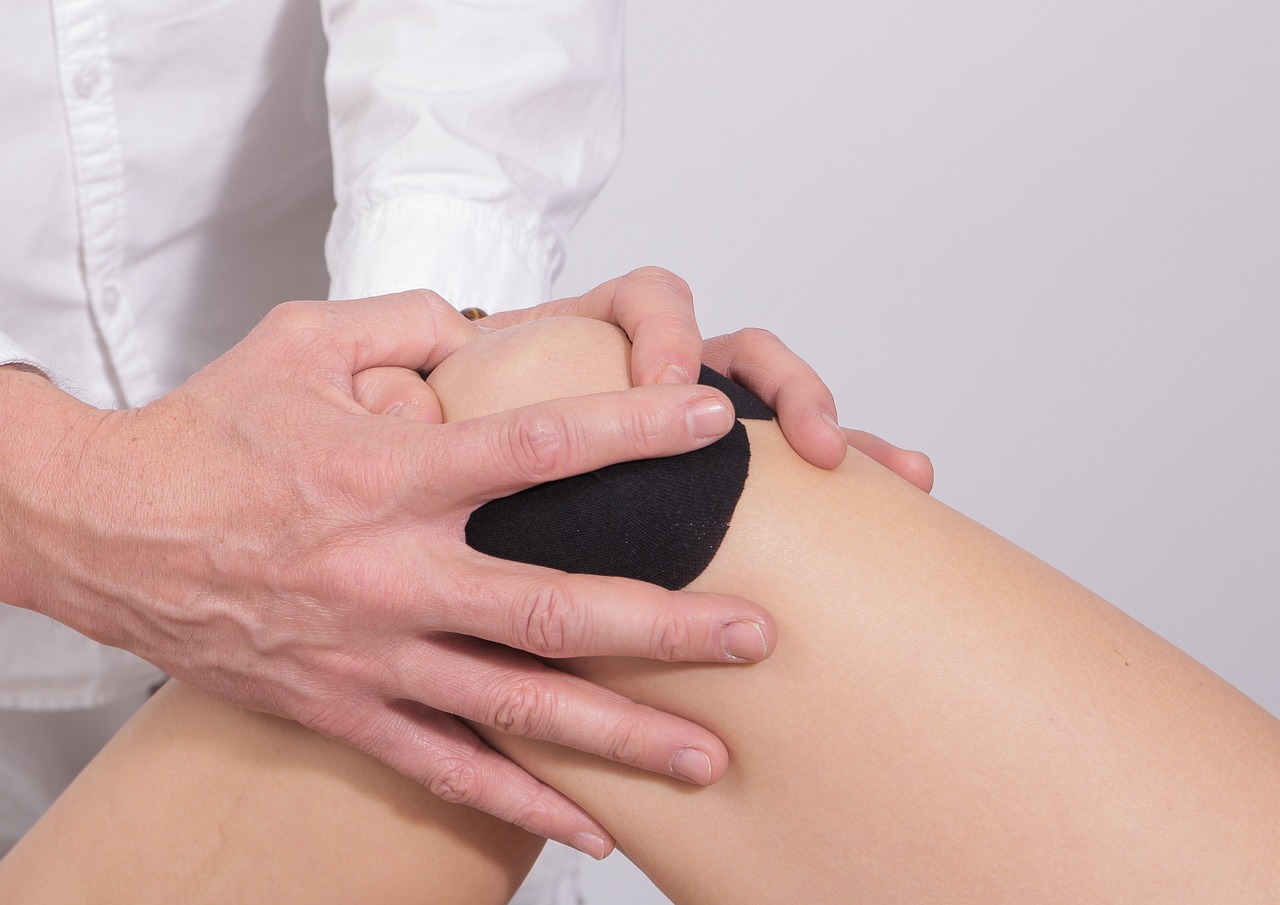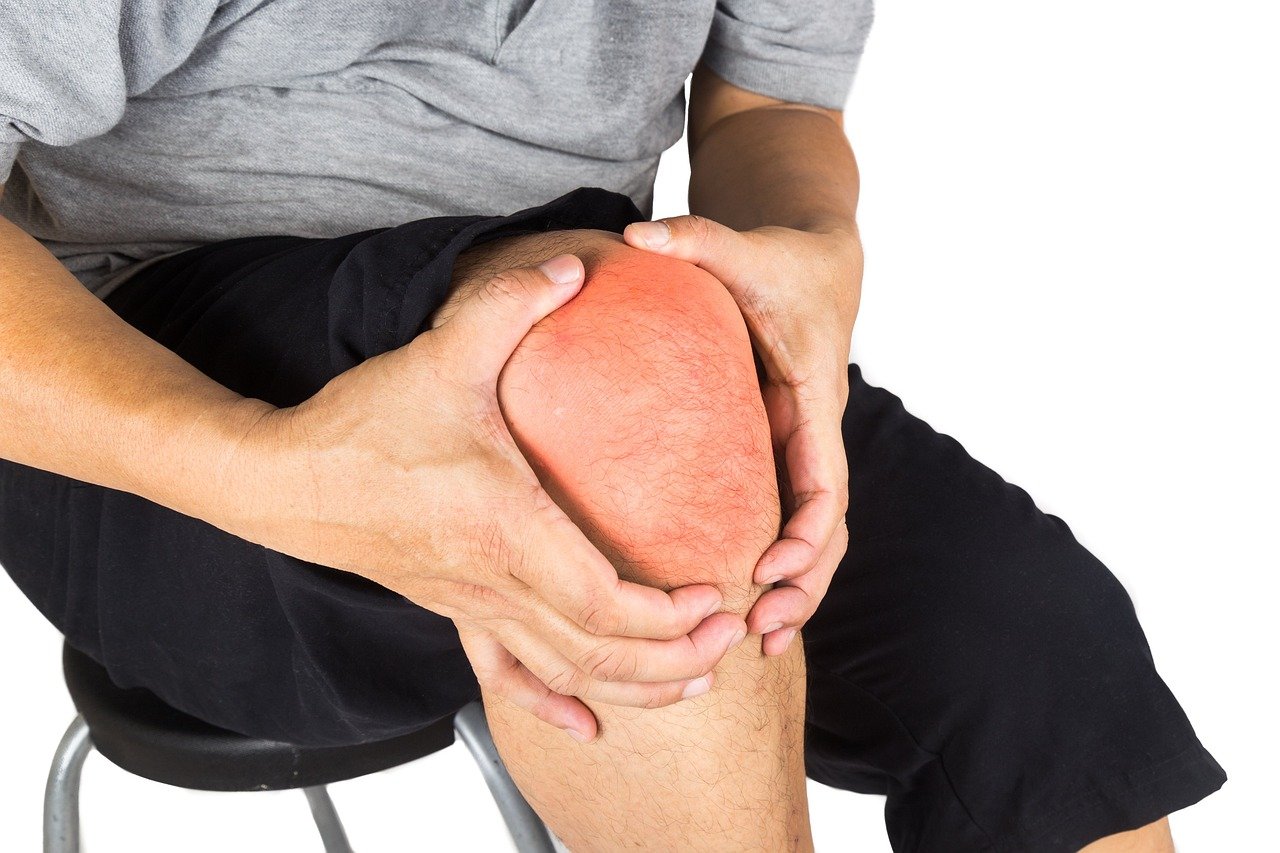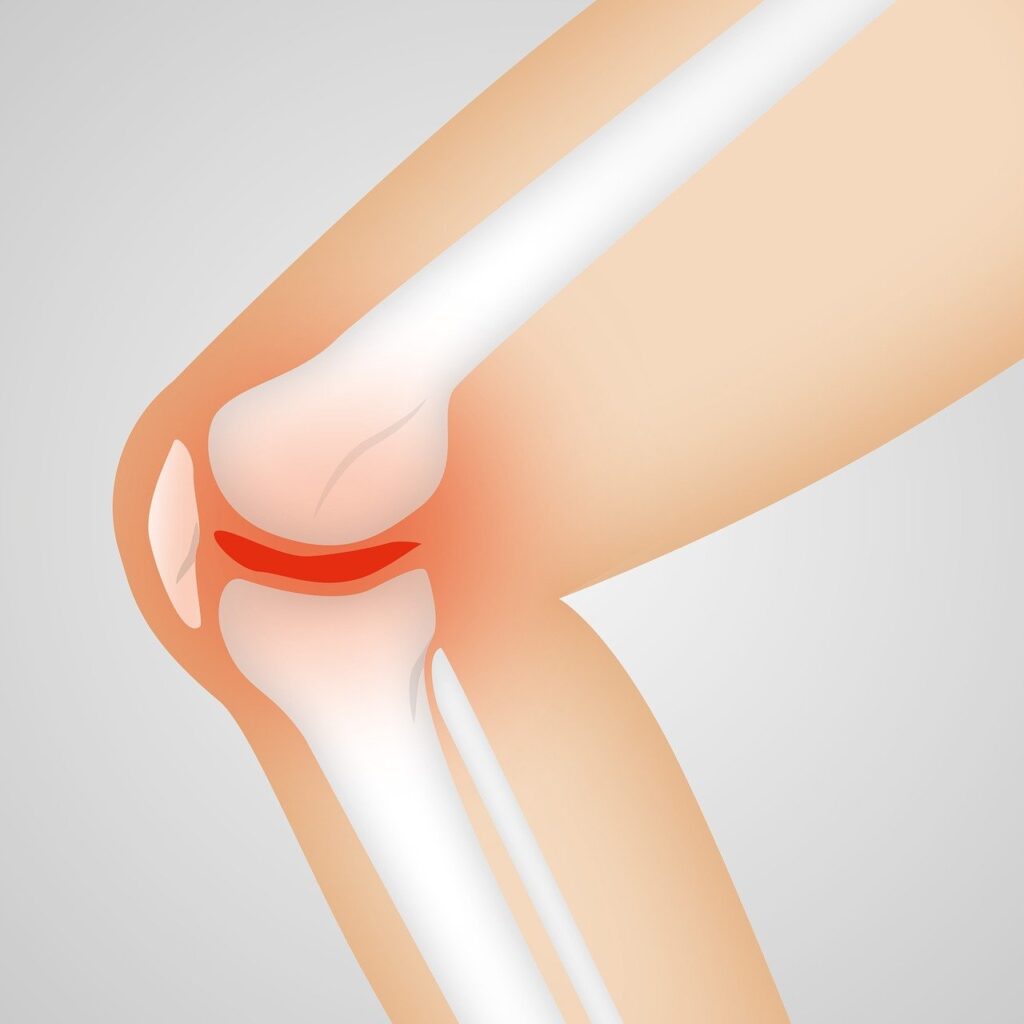Health Care
Unlock Non Surgical Knee Pain Relief: Top Tips & Treatments

Non Surgical Knee Pain Relief: Best Treatments and Tips
Knee pain can significantly impact your daily life, limiting your mobility and causing discomfort. Thankfully, there are effective non surgical knee pain relief options available. In this blog, we’ll explore various methods such as foods for joint health, yoga for knee pain, and the best knee pain treatments without surgery.

Foods for Joint Health
Eating the right foods can greatly enhance joint health and provide non surgical knee pain relief. Incorporate the following foods into your diet:
- Fatty Fish: Rich in omega-3 fatty acids, fish like salmon and mackerel reduce inflammation.
- Berries: Packed with antioxidants, berries can help decrease inflammation.
- Nuts and Seeds: These are excellent sources of omega-3 and help improve joint health.
- Leafy Greens: Vegetables like spinach and kale are high in antioxidants and vitamins.
- Olive Oil: A good source of healthy fats that can help reduce joint inflammation.
Yoga for Knee Pain
Yoga is a gentle and effective way to strengthen and stretch the muscles around the knee, providing non surgical knee pain relief. Here are some yoga poses that can help:

- Warrior Pose: Strengthens the legs and improves balance.
- Bridge Pose: Strengthens the hamstrings and glutes, which support the knees.
- Chair Pose: Engages the thigh muscles and helps stabilize the knee joint.
- Legs-Up-The-Wall Pose: Reduces swelling and improves circulation in the legs.
Knee Pain Treatment Without Surgery
For those seeking knee pain treatment without surgery, several non-invasive options can provide significant relief:
- Physical Therapy: Customized exercises can help strengthen the muscles around the knee and improve flexibility.
- Acupuncture: This traditional Chinese medicine technique can reduce pain and inflammation in the knee.
- Corticosteroid Injections: These can provide temporary relief from knee pain by reducing inflammation.
- Bracing: Wearing a knee brace can help support the knee and alleviate pain.
Non Surgical Knee Pain Relief: Additional Tips

Beyond specific treatments, consider these additional tips for non surgical knee pain relief:
- Weight Management: Maintaining a healthy weight reduces stress on the knees.
- Regular Exercise: Low-impact exercises like swimming or cycling can keep your knees healthy.
- Proper Footwear: Supportive shoes can help reduce knee pain.
- Heat and Cold Therapy: Applying heat or cold packs can relieve pain and reduce inflammation.
Best Knee Pain Relief Options
Combining different approaches often yields the best results for knee pain relief. By focusing on a balanced diet, regular exercise, and professional treatments like physical therapy and acupuncture, you can effectively manage and reduce knee pain without surgery.
In conclusion, non surgical knee pain relief is achievable with the right strategies. By incorporating foods for joint health, practicing yoga for knee pain, and exploring various knee pain treatments without surgery, you can improve your knee health and overall quality of life.
For more Health tips:-
Weight Loss Tips for Women
Importance of Sleep for Health
Improve Heart Health
Blog
Disney & Bath & Body Works Unveil Enchanting Princess Collection

In an exciting new collaboration, Disney is teaming up with Bath & Body Works to launch a brand-new fragrance and body care collection inspired by some of the most beloved Disney princesses. This marks the first major partnership of its kind between the two iconic brands, bringing a magical touch to self-care routines everywhere.
A Fairytale Fragrance Collection
The collection will spotlight six Disney princesses, each with a unique scent crafted to capture their essence and the world they inhabit. From the enchanting aroma of gardenias for Cinderella to the tropical allure of plumeria for Moana, the collection aims to transport fans straight into their favorite Disney fairytales.
Liz Shortreed, Disney’s Senior Vice President for Consumer Products, expressed excitement about the collaboration, emphasizing the personal connection many fans feel toward Disney princesses. “Consumers can choose who they relate to most,” Shortreed said, highlighting how the fragrances were thoughtfully designed to reflect each princess’s personality.
Betsy Schumacher, Chief Merchandising Officer at Bath & Body Works, shared insights on the creative process behind the collection. “We wanted to personify each princess and also think about the environment she’s in. What does it smell like where she is? How do we bring our signature scents into the world of princesses?”
A Grand Selection of Products
The Disney Princess x Bath & Body Works collection will feature 85 different products, offering a variety of options for every fan. Shoppers can expect to find:
- Fine fragrance mists
- Body washes
- Lotions
- Lip glosses
- Candles
- Decorative accessories
Prices for the collection will range from $1.95 to $99.95, ensuring accessibility for every budget. The highly anticipated collection will be available in stores and online starting Sunday, February 16. However, members of Bath & Body Works’ rewards program will get early access through the retailer’s website and app on February 11 and 12.
Bringing Princesses to Life Through Scent
Designers at Bath & Body Works handpicked a princess and immersed themselves in her story, carefully curating scents that encapsulate her spirit. Schumacher expressed admiration for the team’s creative dedication: “It came to life because the designers were able to get into the world of the princesses and truly bring their essence to our products.”
Here’s a closer look at the featured princesses and their signature fragrances:
- Tiana: Inspired by her ambition and perseverance, Tiana’s fragrance features delicate water lily, gilded amber, and shimmering bayou woods.
- Moana: Representing her fearless and adventurous nature, Moana’s scent includes lush green palms, plumeria breeze, and coconut water.
- Jasmine: Embodying her independence and free spirit, Jasmine’s fragrance combines sparkling jasmine flower, jeweled currants, and soft woods with a touch of oud.
- Cinderella: Capturing her optimism and elegance, Cinderella’s scent blends gardenia petals, enchanting musk, and sapphire blue amber.
- Belle: Inspired by her love of knowledge and inner beauty, Belle’s fragrance includes rose petals, sparkling buttercup, and whipped vanilla.
- Ariel: Reflecting her courage and determination, Ariel’s scent features sea salt breeze, golden citrus, and coral waters.

A Future of Enchantment?
With such a dazzling lineup, fans may be wondering if more Disney princesses will join the collection in the future. While nothing is confirmed yet, Shortreed hinted at the possibility of expansion. “We’re obviously hopeful that consumers respond well to it,” she said. “It’s our intent to continue our relationship with Bath & Body Works, so you’ll have to watch this space to see what comes next.”
This collaboration isn’t just about fragrances—it’s about bringing a touch of Disney magic to everyday life. Whether you resonate with the resilience of Ariel, the wisdom of Belle, or the adventurous spirit of Moana, there’s a scent in this collection for every princess at heart.
Where and When to Shop
Mark your calendars! The Disney Princess x Bath & Body Works collection launches on February 16, available both in stores and online. If you’re a Bath & Body Works rewards member, you’ll have the chance to shop early on February 11 and 12 through the retailer’s website and mobile app.
Whether you’re a lifelong Disney fan, a fragrance enthusiast, or simply someone who enjoys a little extra magic in your beauty routine, this collection is set to be a must-have. Get ready to embrace the essence of your favorite Disney princess and step into a world of fantasy and fragrance!
Blog
Nicholas Galitzine Joins Emporio Armani as Fragrance Icon

Emporio Armani has acquainted a new face with its worldwide scent crusade, introducing another time of tastefulness and present day manliness. English entertainer Nicholas Galitzine has been named the worldwide scent diplomat for Emporio Armani, a move that consistently mixes his enamoring on-screen presence with the brand’s tradition of immortal refinement. This declaration matches with the send off of the refreshed More grounded With You Parfum assortment, a scent that exemplifies a refined at this point contemporary allure.
A Rising Star in Hollywood and Style
Nicholas Galitzine has been consistently transforming media outlets with champion exhibitions in movies like Purple Hearts, Red, White and Regal Blue, The Possibility of You, and the hit parody Bottoms. His capacity to carry profundity and genuineness to his characters has enraptured crowds around the world, procuring him a standing as one of the most encouraging entertainers of his age. Presently, his evident appeal and easy style stand out of one of the world’s most esteemed design houses, Emporio Armani.
Armani Magnificence communicated their excitement over the cooperation, expressing, “We are excited to invite Nicholas Galitzine as our new worldwide scent representative. His regular appeal and easy style exemplify the actual quintessence of the Emporio Armani brand.” This organization is supposed to carry a new viewpoint to the scent crusade, reclassifying extravagance for another age of scent lovers.
The Ideal Pair: Galitzine and Emporio Armani
Nicholas Galitzine’s relationship with Emporio Armani appears to be practically predetermined. His ready yet contemporary tasteful adjusts flawlessly with the brand’s character, making him an ideal minister for its aroma line. Whether gracing honorary pathway in customized Armani suits or radiating trust in relaxed environments, Galitzine typifies a feeling of present day manliness that resounds with Emporio Armani’s qualities.
This cooperation likewise flags Emporio Armani’s obligation to mixing exemplary refinement with energetic energy. With Galitzine at the front, the scent crusade is set to engage a different crowd, catching the consideration of both long-term Armani enthusiasts and a more youthful segment anxious to embrace the brand’s particular class.
The Reevaluation of More grounded With You Parfum
The planning of this coordinated effort couldn’t be more great, as Emporio Armani divulges its reconsidered More grounded With You Parfum assortment. Known for its warm, sexy, and profoundly dazzling aroma, More grounded With You has been a #1 among scent devotees since its underlying send off. The refreshed rendition presents a more extravagant, more refined mix that upgrades the scent’s unique notes while keeping up with its unique appeal.
With Galitzine driving the mission, the aroma is supposed to have a considerably more prominent effect. His capacity to easily progress among complexity and receptiveness reflects the substance of More grounded With You — a fragrance that oozes certainty, enthusiasm, and immortal charm.
Another Period of Aroma Promoting
Industry specialists guess that Nicholas Galitzine’s contribution in Emporio Armani’s scent mission will bring a new, unique energy to the brand’s promoting systems. Customarily, extravagance aroma crusades have depended on laid out figures from the style and entertainment worlds. Notwithstanding, Galitzine addresses a shift towards a more contemporary, interesting methodology — one that underscores independence and legitimacy.
His excursion from rising entertainer to worldwide design diplomat mirrors the developing scene of extravagance marking, where character and narrating are just about as fundamental as style. By picking Galitzine, Emporio Armani is embracing another time in which scent isn’t simply an extravagance thing however an expansion of one’s character and individual story.
The Eventual fate of the Association
As Nicholas Galitzine sets out on this new section with Emporio Armani, fans and design aficionados the same are anxious to perceive how this coordinated effort unfurls. The mission, which will carry out internationally, is supposed to highlight a progression of outwardly shocking promotions, computerized content, and restrictive in the background looks into Galitzine’s insight as an Armani representative.
Additionally, his presence in the mission could prepare for additional joint efforts with the brand, possibly stretching out past aromas to different parts of Armani’s style and way of life realm. Given Galitzine’s developing impact in both Hollywood and the design world, this organization is ready to be a vital turning point in his profession.
Determination: A Match Made in Extravagance
Nicholas Galitzine’s arrangement as Emporio Armani‘s worldwide scent envoy is something beyond a business move — it’s a festival of style, charm, and present day manliness. With his irrefutable ability and attractive presence, he is set to hoist the More grounded With You Parfum assortment and cement his position in the realm of high style.
As the mission unfurls, one thing is sure: this joint effort is an ideal mix of immortal tastefulness and contemporary appeal, denoting the start of an interesting new section for both Nicholas Galitzine and Emporio Armani. Fans can anticipate a vivid scent experience that catches the pith of extravagance as well as reclassifies it for another age.
Blog
Hunter Schafer’s Beauty Inspiration The Virgin Suicides & Effortless Glam

Tracker Schafer is known for her courageous way to deal with design, continually pushing limits with high-risk, high-reward looks. Working intimately with beautician Dara Allen, she has developed an unmistakable stylish that consistently mixes cutting edge design with classic motivated pieces. Notwithstanding, her joint effort with beautician Jillian Halouska really rejuvenates her magnificence vision. Schafer’s consistently developing hair minutes are rich with references, drawing motivation from social symbols and artistic works of art.
At Paris Couture Week, where dream and gentility became the overwhelming focus, Schafer showed up at Ludovic de Holy person Sernin’s visitor assortment for Jean Paul Gaultier. She completely embraced the show’s ethereal and insubordinate subjects, wearing a plunging white ribbon peplum top matched with trimmed erupted jeans and dark pattern heels. Her hair was a pivotal piece of the troupe, radiating an easily scattered, somewhat turbulent charm.
As per Halouska, Schafer’s hairdo was a blend of two notorious motivations: the unique, brave energy of a privateer (suggestive of Keira Knightley’s personality in Privateers of the Caribbean) and the grit mixed, nonchalant tasteful of Kate Greenery during her party-young lady time. The outcome was a disheveled, incompletely ideal outpouring of waves that felt both hot and casual.
Creating the “Flawed but still great” Hairdo
To accomplish this look, Halouska utilized a munititions stockpile of styling items, including Oribe Gold Desire Sustaining Hair Oil for sparkle, Endlessly blunder Sumo Fluid Wax Splash for surface, and various hair curlers to make different wave designs.
She twisted irregular segments of Schafer’s hair with various estimated irons, then, at that point, roughened the waves utilizing the cool setting on a blow dryer to give a normally windblown impact. A few strands were left straighter, while others were scrunched to make a complex surface. A liberal utilization of hair oil gave the style a lived-in quality, while the splash wax at the roots permitted the hair to flip easily aside. At last, Halouska cut a couple of face-outlining parts of wrap over Schafer’s eye, adding a demeanor of secret and free enterprise class.
“It’s a tribute to defect,” Halouska made sense of. “It’s attractive, easy, and appears as though she’s simply ventured off the dance floor following an inconceivable evening out on the town.”
An Eccentric Look Enlivened by The Virgin Suicides
Schafer kept on trying different things with her excellence stylish sometime thereafter at an advantage for Helps noble cause Sidaction. She diverted an ethereal, nearly pixie like style in an off-the-shoulder cream Jean Paul Gaultier dress, which she matched with an organized dark calfskin coat for a striking difference.
For this look, her hair was styled in lengthy, streaming waves with fragile miniature plaits outlining her face. Halouska took motivation from Sofia Coppola’s famous film The Virgin Suicides, which has for some time been a most loved reference in the style world for its marvelous, nostalgic stylish.
To accomplish this delicate, heartfelt look, Halouska applied Shu Uemura Grease to add sparkle and utilized Sisley Hairspray to structure the interlaces while keeping a characteristic vibe. Endlessly blunder Stylist’s Imperceptible Oil Lightweight Sparkle Completing Splash was then clouded over the hair to upgrade its non-abrasiveness and development.
The Specialty of the Ideal Miniature Plait
Miniature plaits, however apparently easy, require accuracy. Halouska shared a few fundamental ways to accomplish Schafer’s fragile face-outlining meshes.
Clean Splitting: Utilize a fine-tooth look over to make a perfect segment for the interlaces.
Secure Strands: Use barrettes to keep the remainder of the hair far removed while twisting.
Use Styling Glue: Applying a modest quantity of grease or styling glue to fingertips prior to twisting guarantees a smooth completion and forestalls flyaways.
Anchor the Plait: Begin the twist at the hairline, taking care of in just top segments for a complimenting, face-outlining impact.
Secure It: Proceed with the twist until the scruff of the neck and secure it prudently with a pin for a consistent mix.
By following these means, Halouska guaranteed that Schafer’s miniature interlaces remained in one piece without looking excessively solid or over-styled. The outcome was an impeccably adjusted look — fragile, idyllic, and inconspicuously fun loving.
Tracker Schafer’s Consistently Advancing Magnificence Tasteful
Schafer’s capacity to sway between various magnificence personas makes her such an astonishing style symbol. From the alarm like disheveled waves at Paris Couture Week to the unconventional, practically powerful miniature plaits at the Sidaction benefit, her looks generally recount a story.
Halouska summarized it impeccably: “Her hair has its very own character — it’s lively, alluring, and nostalgic, yet still feels extraordinarily present day.”
The previous spring at the Cannes Film Celebration, Schafer shocked in a milkmaid-motivated white cut skirt dress, finished off with a beguiling Prada headscarf. Whether she’s directing a 90s It-young lady, a realistic ingénue, or a defiant privateer, her magnificence decisions remain refreshingly startling and easily cool.
With Schafer’s daring way to deal with style, one can ponder — what film, period, or social reference will rouse her next groundbreaking excellence second?
-

 Health Care2 years ago
Health Care2 years ago7 Surprising Ways to Lower Cholesterol Naturally – No Medication Needed
-

 Health Care2 years ago
Health Care2 years agoPink Eye(Conjunctivitis): What Is Commonly MISDIAGNOSED As PINK EYE?
-

 Entertainment1 year ago
Entertainment1 year agoAustin Abrams Discusses ‘Wolfs,’ Future Projects, and ‘Euphoria’ Season 3
-

 Celebrity2 years ago
Celebrity2 years agoRelationship Lessons from Jennifer Lopez and Ben Affleck
-

 Entertainment2 years ago
Entertainment2 years agoZendaya Opens Up About Racy Scenes and Family Reactions in New Film
-

 NEWS2 years ago
NEWS2 years agoIs Trump Going To Jail? Your Questions About Trump’s Trial Answered
-

 Entertainment2 years ago
Entertainment2 years agoZendaya and Tom Holland kiss at The London Challengers premiere.
-

 Entertainment2 years ago
Entertainment2 years agoChris Martin and Dakota Johnson reportedly got engaged years ago




